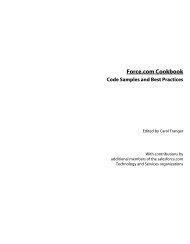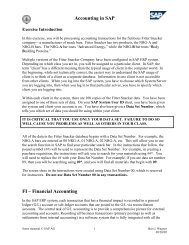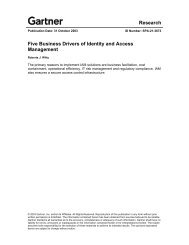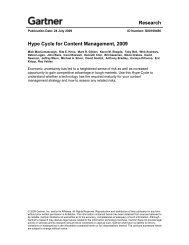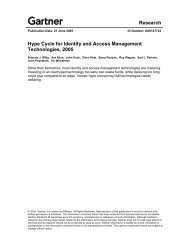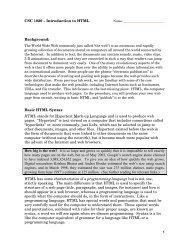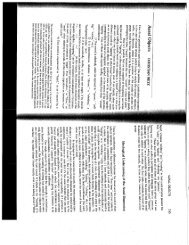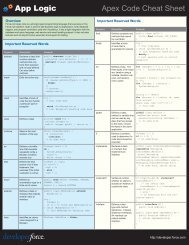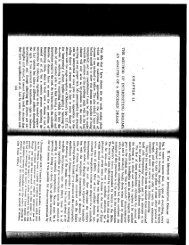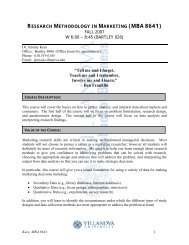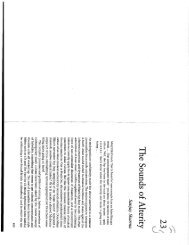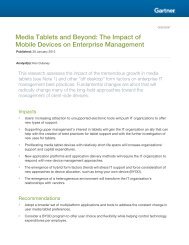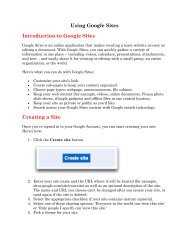Content Management Framework
Content Management Framework
Content Management Framework
Create successful ePaper yourself
Turn your PDF publications into a flip-book with our unique Google optimized e-Paper software.
<strong>Framework</strong> • 9<br />
system needs to be able to maintain, track, and enforce<br />
a predefined set of operational policies and<br />
procedures for aging, archiving, purging, and shredding<br />
enterprise content. <strong>Content</strong> management systems<br />
need to be able to link content with business<br />
processes. Organizations need to be able to define, in<br />
rigorous detail, the business processes for archiving<br />
and removing content from their content management<br />
systems and the business processes for then<br />
preserving that content for a predetermined period of<br />
time. Finally, organizations need to maintain audit<br />
trails about the business processes and be able to<br />
document when each process runs, what people<br />
within the organization are involved, and what the<br />
outcome of the process has been.<br />
GRANULARITY<br />
<strong>Content</strong> Components<br />
Digital content ranges in its degree of granularity.<br />
We are used to defining content in terms of pages<br />
and documents. Text-centric documents have a fixed<br />
organizational structure and a linear information<br />
flow. We might store them in an electronic repository<br />
and look for individual items based on document<br />
names or other indexing attributes.<br />
But when we want to do something, such as order<br />
a printer from an online catalog, we expect to focus<br />
on the specific content components—the short, pithy<br />
sections that tell us exactly what we need to know<br />
and that are linked to our specific business contexts.<br />
Rather than just browsing through pages of online<br />
printer descriptions, we expect to find quickly the<br />
particular items that meet our needs.<br />
Non-text media pose a related set of challenges<br />
for content granularity. We may be looking at a picture<br />
in an album, listening to a recorded segment of<br />
a radio program stored for online distribution, or<br />
watching a Macromedia Flash file designed to create<br />
an experience. All of these content components need<br />
to be managed in a consistent manner alongside ordinary<br />
text.<br />
<strong>Content</strong> granularity is thus a means to an end. We<br />
believe that fine-grained content components are<br />
going to become increasingly important for delivering<br />
a total customer experience—either online or<br />
through hard-copy documents.<br />
What is the state of the art for managing content<br />
granularity Today, content management systems on<br />
the market focus primarily on a text-based environment.<br />
They rely on templates to separate the actual<br />
text elements from their underlying presentation on<br />
various display devices. All of these systems will<br />
manage static page displays and include capabilities<br />
to produce printed documents (in Adobe Acrobat<br />
format). Most no longer rely on flat-file repositories.<br />
Rather, they include capabilities to store text-based<br />
content in structured databases and to query the repository<br />
based on bibliographic criteria. Merging<br />
and managing non-text-based elements (visuals and<br />
sounds in various formats) is at best awkward and<br />
varies by business context.<br />
Most enterprise content management systems either<br />
explicitly manage XML-tagged documents or<br />
have announced their intention to do so by their next<br />
major product release. Many offer capabilities for<br />
reusing and repurposing content: Individuals maintain<br />
a single (canonical) version of a content component;<br />
it is then repurposed and distributed to different<br />
environments based on predetermined criteria<br />
such as specific attributes or index criteria.<br />
Key Factors<br />
There are three factors to consider when assessing<br />
how well a content management system manages<br />
granular content components. These factors are:<br />
• The content components being managed<br />
• XML component support<br />
• Granular content security<br />
THE CONTENT COMPONENTS BEING MAN-<br />
AGED. <strong>Content</strong> management systems vary by their<br />
capabilities to manage content components as granular<br />
chunks or content-centric business objects. We<br />
are looking for solutions and environments in which<br />
we can rapidly assemble granular content components<br />
on-the-fly, based on individual and/or grouplevel<br />
selection criteria, and then link particular Webpage<br />
displays to specific steps within customerfocused<br />
business processes. We are looking for solutions<br />
and environments in which we can reuse content<br />
components in different media (e.g., print<br />
documents, online and offline catalogs, Web pages,<br />
and email text) and in different business contexts.<br />
© 2004 Patricia Seybold Group • Unauthorized redistribution of this report is a violation of copyright law. A Customers.com ® Research Service



